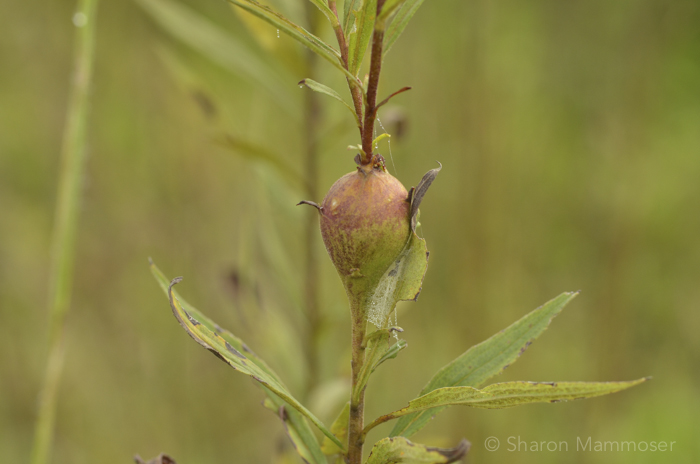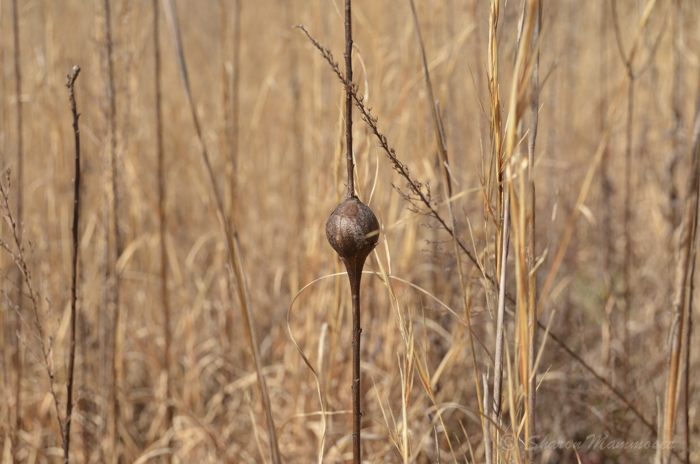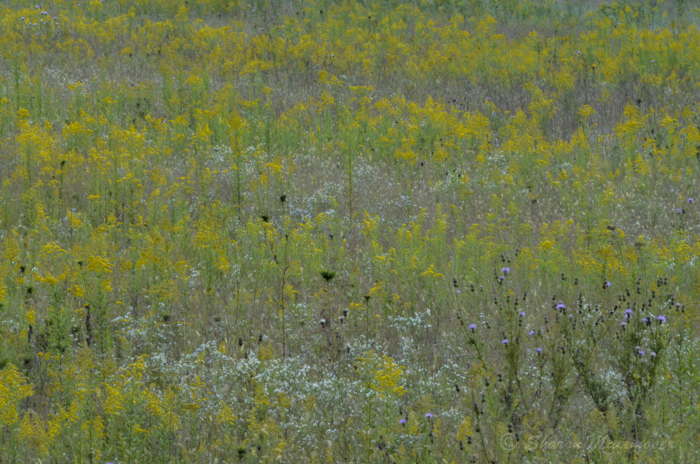 Have you ever heard of a GALL? Not like “Wow, you are bold! You have gall!” but gall as in an abnormal growth formed on plants or trees? These galls in nature are formed in response to the presence of some insect, like a fly or a wasp, or in some cases, a fungi, bacteria, nematode (kind of worm) or even a mite.
Have you ever heard of a GALL? Not like “Wow, you are bold! You have gall!” but gall as in an abnormal growth formed on plants or trees? These galls in nature are formed in response to the presence of some insect, like a fly or a wasp, or in some cases, a fungi, bacteria, nematode (kind of worm) or even a mite.
In the United States alone, there are 2000 species of insects that cause galls. Each insects usually has a specific host plant, such as apple, oak or, in the case of this week’s puzzler, goldenrod. The abnormal growth is a result of chemicals the insects release that causes the plant to produce these galls, which can be all different sizes, shapes and colors.
The gall on the stem of goldenrod is caused by a fly called a Goldenrod gall fly. This fly is less than 5mm long and as an adult, does not eat and lives only about two weeks. In its larval stage however, the fly lives for a year. Here’s how it works: The adult female mates and then using her ovipositor, which looks like a needle at the back of her body, injects an egg into the stem of the goldenrod. After ten days, the egg hatches into a tiny grub-like creature called a larva. The larva begins eating the stem of the goldenrod and its saliva contains a chemical that causes the plant to form this abnormal ball. Inside, the larva eats and grows. When winter arrives, the larva survives because it has an anti-freeze-like chemical in its body. Dormant all winter, the larva hatches out as an adult in the spring after going through its pupa or inactive phase. It will emerge from the gall and live live as an adult, for its very short life of two weeks! 
Interestingly, there are numerous creatures who will feed on the larva inside the gall. Some birds do this, including Carolina Chickadees and Downy Woodpeckers.
Here are some more pages about galls:
Texas Entomology Extension Publication


